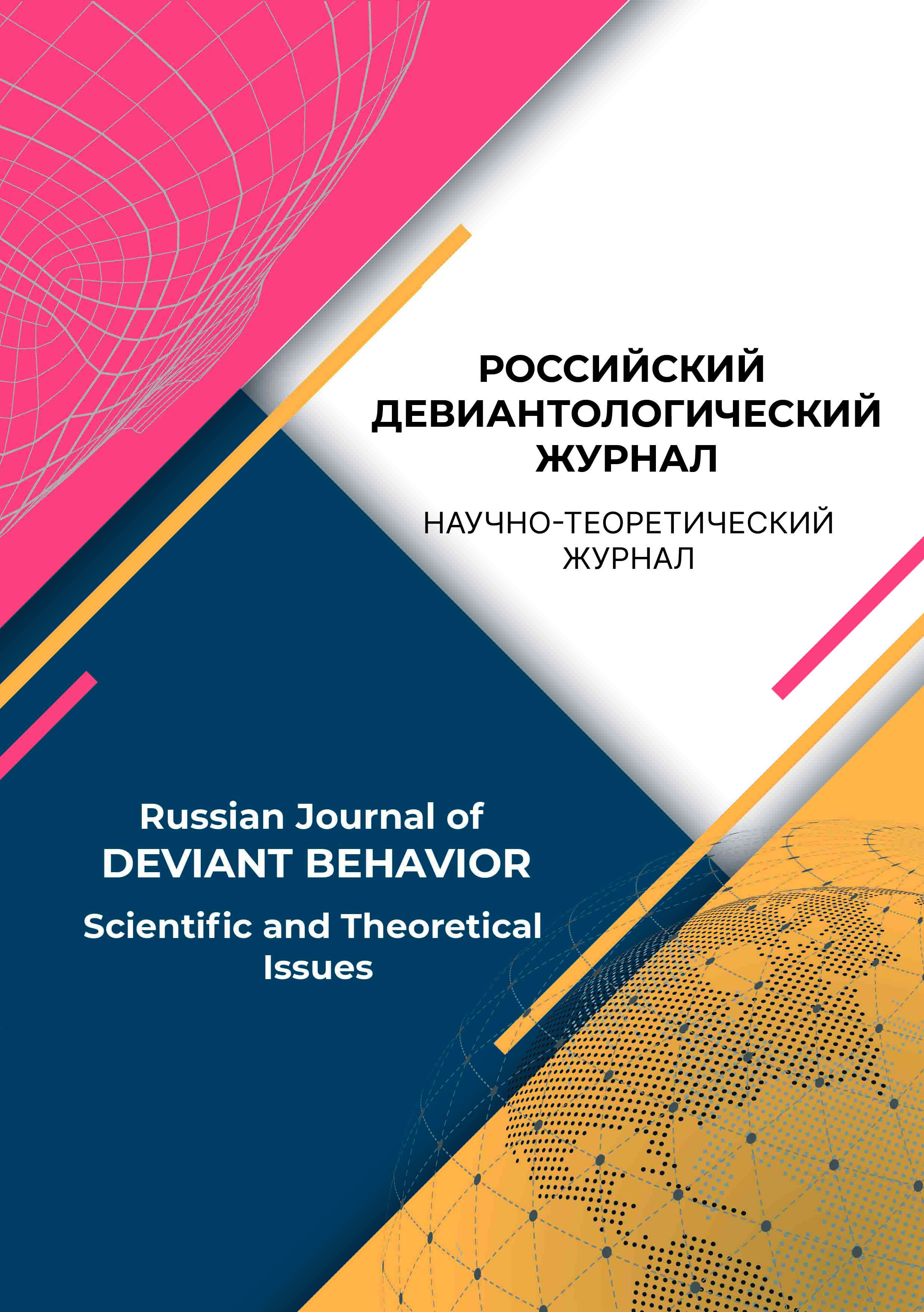Kaluga, Kaluga, Russian Federation
UDC 159.99
Introduction. One of the main problems of ensuring personal safety is studying intimate partner violence in a legal context. This article for the first time deals with the situation of intimate partner violence as legally significant, based on the qualifying features of the offence of sexual inviolability. Research methods and results. In the course of theoretical analysis, possible types of behaviour of the victim in a situation of intimate partner violence were identified, as well as distinctive features of the crime committed in partner relationships in comparison with sexual offences. The main identifiable features of the ability of a victim of intimate partner violence to realise the nature of the actions committed against her/him and to resist them were determined, including the ability to identify what happens as violence, to adequately assess the violent actions, to predict the consequences of such relationships and actions, to regulate her/his own behaviour in a legally significant situation; personal experience (in childhood and in her/his own relationships); the level of mental development, the peculiarity of subjective processing of information; individual and personal characteristics of a victim of intimate partner violence. The necessity of determining a legally defined qualifying feature of the corpus delicti in cases of intimate partner violence is emphasised.
victim, violence, intimate-personal relationships, actions taken, resistance, readiness to resist
1. Alimov, S. B., Antonov-Romanovskij, G. V., Reznik, G. M. (1980). Nasil'stvennaya prestupnost' v sferah byta i dosuga (problemy kriminologicheskoj tipologii). Voprosy bor'by s prestupnost'yu, 33, 12–21.
2. Bogdanovich N. V., Delibalt V. V., Dyagterev A. V. (2015). K probleme psihologicheskogo opredeleniya ponyatiya «Yuridicheski znachimye situacii». Psihologiya i pravo, 5 (3), 29–36. https://doi.org/10.17759/psylaw.2015050303
3. Bodalev, A. A. (pod obshch. red.) (2015). Psihologiya obshcheniya: enciklopedicheskij slovar' (2-e izd., ispr. i dop.) Moskow: Kogito-Centr.
4. Darenskih, S. S. (2013). Semejnoe nasilie v otnoshenii zhenshchin. Izvestiya Altajskogo gosudarstvennogo universiteta, 2-2 (78), 52–55.
5. Enikolopov, S. N., Hvostova, E. S. (2011). Social'no-psihologicheskie predstavleniya o seksual'nom nasilii v sem'e. Psihologiya i pravo, 1 (1), 1–12.
6. Zolotuhin, S. N. (2019). Kriminal'noe nasilie v sfere semejno-bytovyh otnoshenij: monografiya. Chelyabinsk: Biblioteka A. Millera.
7. Konysheva. L. N. (1988). Sudebno-psihologicheskaya ekspertiza psihicheskogo sostoyaniya nesovershennoletnej zhertvy iznasilovaniya: avtoref. dis. ... kand. psiholog. nauk. Moskow.
8. Kudryavcev, V. N. (1968). Prichinnost' v kriminologii (o strukture individual'nogo prestupnogo povedeniya). Moskow: Yuridicheskaya literatura.
9. Lukinyh, I. D. (2009). Ponyatie i harakteristika ulichnoj prestupnosti. Rossijskij sledovatel', 14, 20–22.
10. Nigmatullin, M. R. (2023). Deyatel'nost' organov vnutrennih del po preduprezhdeniyu semejno-bytovyh prestuplenij. Viktimologiya, 10 (3), 368–376.
11. Pavlova, A. A., Koryakina, Z. I. (2014). Psihicheskoe nasilie kak sposob soversheniya prestupleniya. Vestnik Severo-Vostochnogo federal'nogo universiteta im. M. K. Ammosova, 6 (11), 164–167.
12. Safuanov, F. S. (2022). Vnutrisemejnaya kriminal'naya agressiya: glazami sudebnogo eksperta-psihologa. Psihologiya i pravo, 12 (3), 3–13. https://doi.org/10.17759/psylaw.2022120301
13. Sedenkova, I. S. (2021). Gendernoe nasilie kak faktor narusheniya bezopasnosti lichnosti. Vestnik Kaluzhskogo universiteta. Seriya 1. Psihologicheskie nauki. Pedagogicheskie nauki, 4 (4 (13)), 62–68.
14. Starkov, A. V. (1992). Bytovye nasil'stvennye prestupleniya (prichinnost', gruppovaya profilaktika, nakazanie): monografiya. Ryazan': Izdatel'stvo: "Ryazanskaya vysshaya shkola MVD RF".
15. Ul'yanova, N. E. (2019). Manipulyaciya v otnoshenii zhertv prestuplenij i inyh pravonarushenij. Viktimologiya, 2 (20), 73–78.
16. Cavanaugh, M. M., & Gelles, R. J. (2005). The Utility of Male Domestic Violence Offender Typologies: New Directions for Research, Policy, and Practice. Journal of Interpersonal Violence, 20 (2), 155–166. https://doi.org/10.1177/0886260504268763
17. Coker, A. L., Smith, P. H., Bethea, L., King, M. R., & McKeown, R. E. (2000). Physical health conse-quences of physical and psychological intimate partner violence. Archives of Family Medicine, 9 (5), 451–457. https://doi.org/10.1001/archfami.9.5.451
18. Dutton, D. G., & Kropp, P. R. (2000). A Review of Domestic Violence Risk Instruments. Trauma, Violence, & Abuse, 1 (2), 171–181. https://doi.org/10.1177/1524838000001002004
19. Gondolf, E., & Fisher, E. (1991). Wife battering. Case Studies in family violence. In: R. T. Ammerman, M. Hersen (eds), Case Studies in Family Violence. New York, London: Plenum Press
20. Nicholls, T. L., Pritchard, M. M., Reeves, K. A., & Hilterman, E. (2013). Risk Assessment in Intimate Partner Violence: A Systematic Review of Contemporary Approaches. Partner Abuse, 4 (1), 76–168. https://doi.org/10.1891/1946-6560.4.1.76
21. Sullivan, T. P., McPartland, T. S., Armeli, S., Jaquier, V., & Tennen, H. (2012). Is it the exception or the rule? Daily co-occurrence of physical, sexual and psychological partner violence in a 90-day study of substance-using, community women. Psychology of Violence, 2 (2), 154–164. https:// doi.org/10.1037/a0027106













